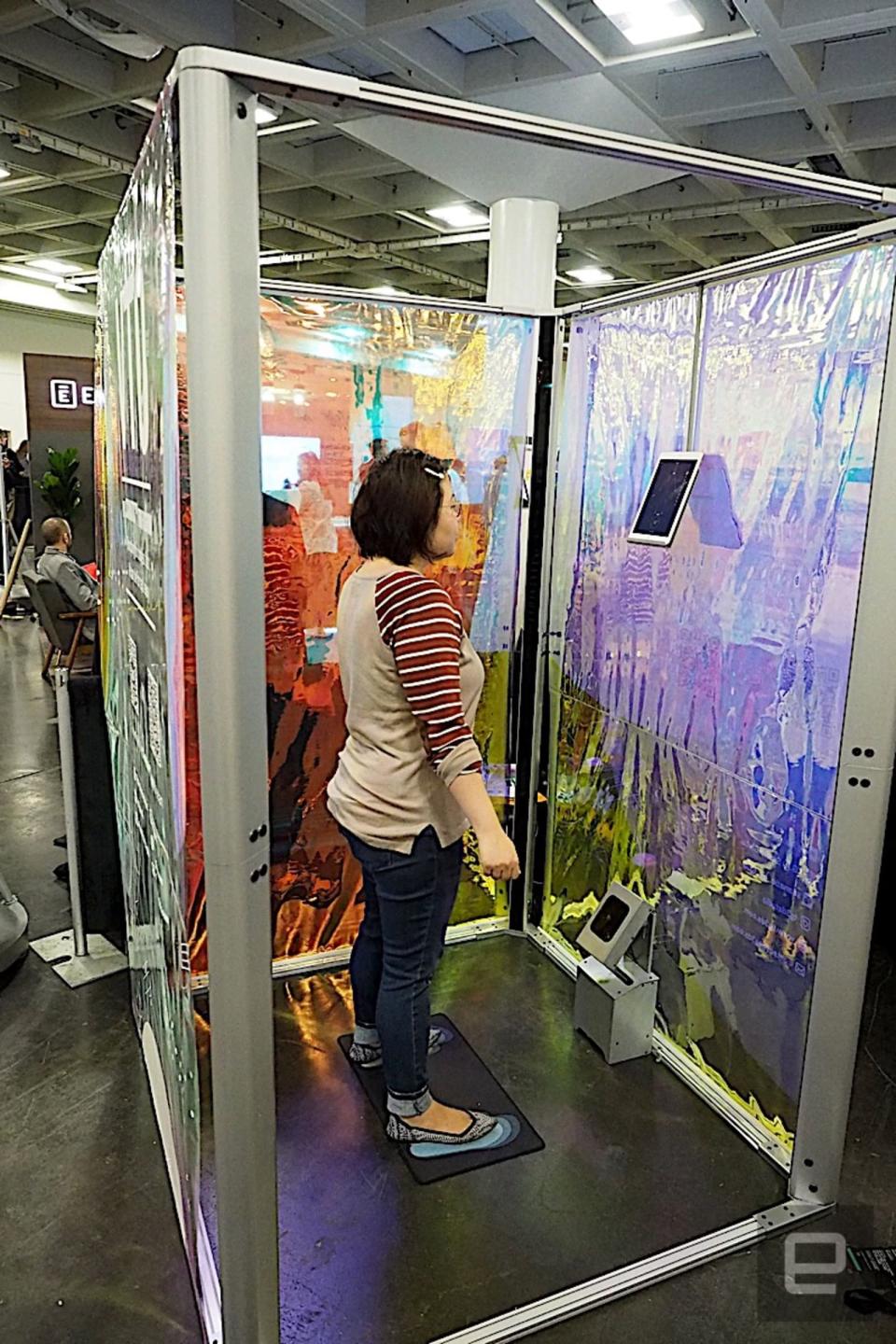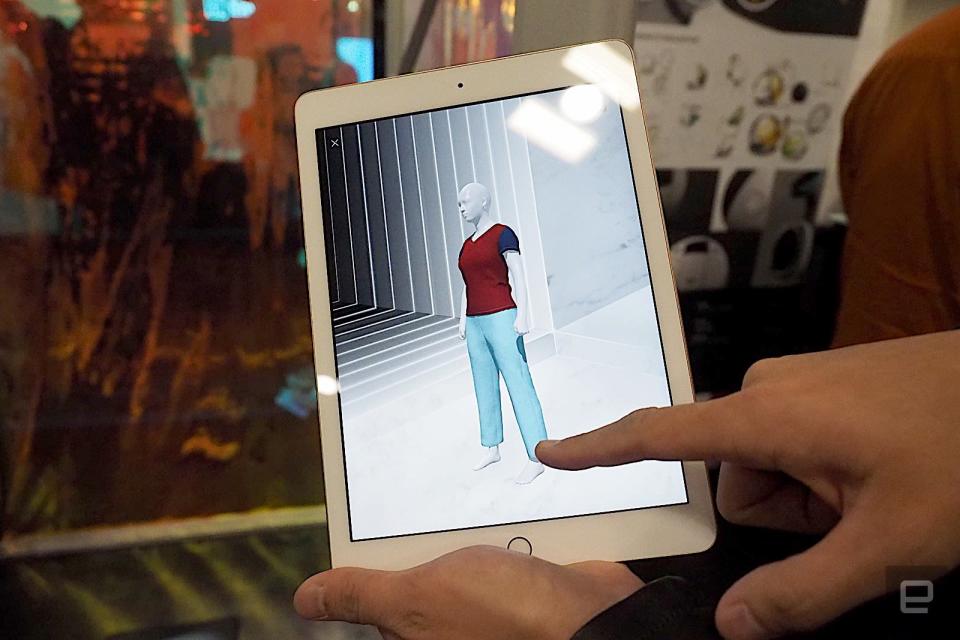3D body scanner promises perfectly fitting clothes
No more fretting in the fitting room.
Last year, we had a look at TG3D Studio's Scanatic 360 Body Scanner, which susses out your body's measurements so you know exactly what clothing size to get at the store. Now, the company has renamed it to the VTO (Virtual Try-On) by Scanatic for Fashion, and has upgraded it so it can capture higher density scans, making them much more accurate than before. This way, you can "see" just how the clothes will fit on your body, hopefully making it that much easier to get the right outfit for your body type.
I had a demonstration at Techcrunch's Disrupt event in San Francisco, where co-founder Rick Yu walked me through a typical body scan. Instead of the piano-black changing room that my colleague used last year, I stepped into a relatively simple setup made up of scanners and three transparent plastic sheets. According to Yu, the whole setup has been streamlined and made much more portable; it can even be packed up into a single suitcase.
To try it, you'll need to use a scanning app, which can either be a store-branded one or an app like CloudZet, which is what Yu used on me. All I had to do was step into the designated area, and walk through the instructions on the app -- standing straight with my arms spread out and my hands clenched in a loose fist several inches away from my hips. Previous versions of the body scanner used a pair of handlebars to help guide your position, but that's no longer needed here. Yu does recommend you use the scanner using skin-tight clothing for the most accurate measurements.
In just three seconds, the scanner was done, and it recorded the measurements of my neck, shoulders, chest and so on. Yu said that the app presented me about ten data points, but a retailer or a tailor could have as many as 150 data points to really map out my entire body.

Once your avatar is mapped out, you can then start dressing it in different clothes to see how you would look like in them. TG3D Studio says that designers and clothing manufacturers can use the same scanning tech to map out original production designs exactly, and are able to capture not just the shape of the clothes, but the silhouette, drape and texture of the fabric.
So, for example, you might very well fit into a size large jacket, but the shoulders still might not fit just right. Yu showed me an example of a colleague's body scan avatar wearing a jumpsuit. At first it looks like it fits her just fine, but if you spun the avatar around, you'd be able to see that there's actually a big gap near her arms, showing that it would be too loose on her. These are details that you might miss when buying clothes online without having tried the items on. But in the future, if you have these body scan details, that might no longer be an issue.
Of course, these scanners are not meant for consumer use. TG3D Studio imagines they'll be used more by fashion companies, designers, or perhaps bespoke tailors of the future. It'll likely be a few more years before we'll see anything like this in your local mall.



